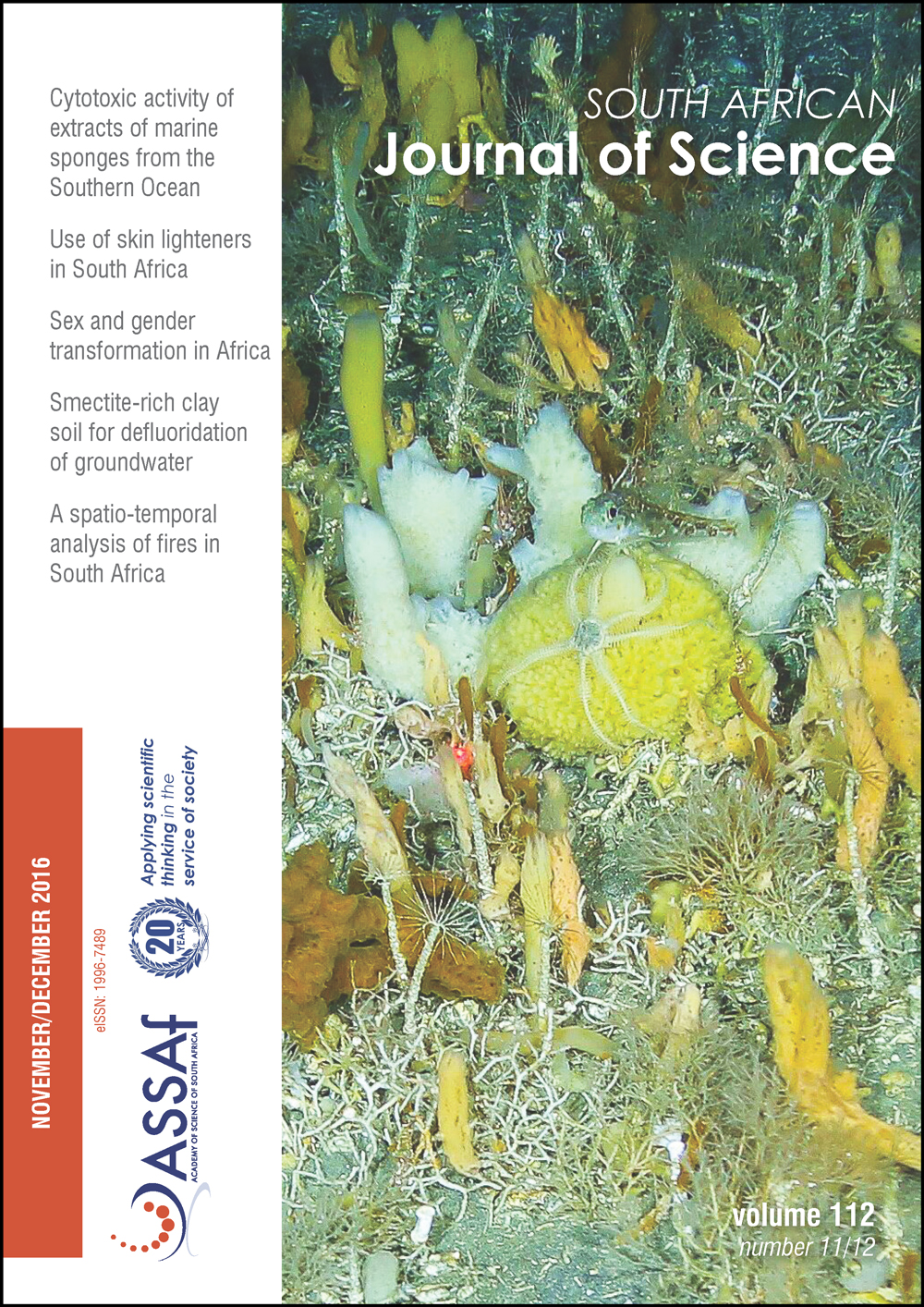A spatio-temporal analysis of fires in South Africa
DOI:
https://doi.org/10.17159/sajs.2016/20150489Keywords:
climate change, fire frequency, mitigation and monitoring, MODIS, wildfiresAbstract
The prevalence and history of fires in Africa has led to the continent being named ‘the fire continent’. Fires are common on the continent and lead to a high number of annual fire disasters which result in many human fatalities and considerable financial loss. Increased population growth and concentrated settlement planning increase the probability of fire disasters and the associated loss of human life and financial loss when disasters occur. In order to better understand the spatial and temporal variations and characteristics of fires in South Africa, an 11-year data set of MODIS-derived Active Fire Hotspots was analysed using an open source geographic information system. The study included the mapping of national fire frequency over the 11-year period. Results indicate that the highest fire frequency occurred in the northeastern regions of South Africa, in particular the mountainous regions of KwaZulu-Natal and Mpumalanga, and in the Western Cape. Increasing trends in provincial fire frequency were observed in eight of the nine provinces of South Africa, with Mpumalanga the only province for which a decrease in annual fire frequency was observed. Temporally, fires were observed in all months for all provinces, although distinct fire seasons were observed and were largely driven by rainfall seasons. The southwestern regions of South Africa (winter-rainfall regions) experienced higher fire frequencies during the summer months and the rest of the country (summer-rainfall regions) during the winter months. Certain regions – those which experienced bimodal rainfall seasons – did not display distinct fire seasons because of the complex wet and dry seasons. Investigation into the likely effects of climate change on South African fire frequency revealed that increased air temperatures and events such as La Niña have a marked effect on fire activity.
Significance:- Fires have played a significant role in the morphology of the African continent.
- Fires provide a number of environmental services.
- Fires were observed in all months in all provinces in South Africa, although distinct fire seasons were observed and were largely driven by rainfall seasons.
- Global climate change will result in an increase in the frequency of fires.
Downloads
Published
Issue
Section
License

All articles are published under a Creative Commons Attribution 4.0 International Licence
Copyright is retained by the authors. Readers are welcome to reproduce, share and adapt the content without permission provided the source is attributed.
Disclaimer: The publisher and editors accept no responsibility for statements made by the authors
How to Cite
- Abstract 1534
- PDF 3339
- EPUB 194
- XML 264
- Supplementary Material 279












.png)